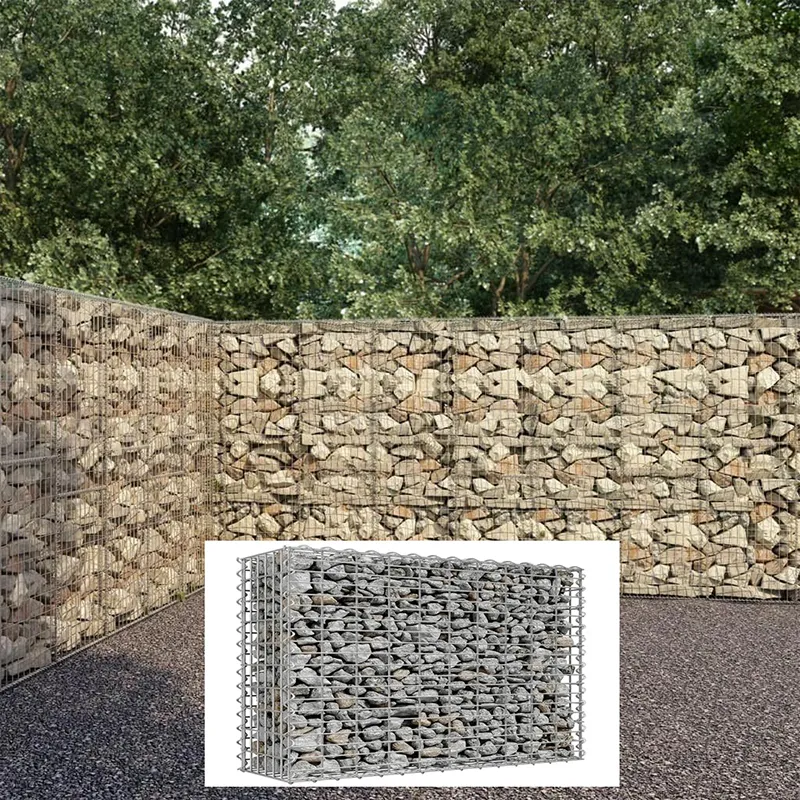
- Afrikaans
- Albanian
- Arabic
- Armenian
- Azerbaijani
- Basque
- Belarusian
- Bengali
- Bosnian
- Bulgarian
- Croatian
- Czech
- Danish
- Dutch
- English
- Esperanto
- Estonian
- Finnish
- French
- Galician
- Georgian
- German
- Greek
- hawaiian
- Hindi
- Hungarian
- Indonesian
- irish
- Italian
- Lao
- Latvian
- Lithuanian
- Luxembourgish
- Macedonian
- Maltese
- Myanmar
- Norwegian
- Polish
- Portuguese
- Romanian
- Russian
- Serbian
- Slovak
- Somali
- Spanish
- Swedish
- Thai
- Turkish
- Turkmen
- Vietnamese
სექ . 27, 2024 19:45 Back to list
Effective Strategies for Choosing Livestock Field Fencing Solutions
The Importance of Livestock Field Fencing
Livestock farming plays a pivotal role in agriculture, providing food, fiber, and various products essential to our daily lives. However, one critical aspect of successful livestock management often overlooked is the use of proper fencing in pasture fields. Effective livestock field fencing not only secures animals but also maintains the integrity of the farm environment. In this article, we will explore the significance of livestock field fencing, types of fencing materials, installation tips, and maintenance practices to ensure longevity and effectiveness.
The Significance of Livestock Field Fencing
Field fencing serves multiple purposes in livestock farming. First and foremost, it acts as a barrier that keeps animals contained within designated areas. This is vital for protecting the animals from potential dangers such as predators, traffic, or wandering into neighboring properties. Moreover, fencing prevents livestock from accessing harmful plants or areas that could pose health risks.
In addition to safeguarding the animals, effective fencing plays a crucial role in pasture management. It allows farmers to rotate livestock between different grazing areas, which helps maintain grass productivity and promotes soil health. By controlled grazing, farmers can prevent overgrazing, contributing to sustainable agricultural practices that are beneficial for the environment.
Types of Fencing Materials
When considering livestock field fencing, various materials come into play, each with its unique benefits and drawbacks. Let's explore some common types
1. Barbed Wire Fencing This is one of the most traditional choices for livestock fencing. Barbed wire consists of steel wire with sharp edges or points, making it effective in deterring livestock from pushing against the fence. It is relatively low-cost but can be hazardous if livestock become entangled.
2. Electric Fencing Increasingly popular among modern farmers, electric fencing provides a psychological barrier as well as a physical one. It delivers a mild shock when animals touch the wire, discouraging them from attempting to breach the fence. Electric fencing is adaptable and can be used in various configurations, making it suitable for diverse livestock needs.
livestock field fence

3. Wooden Post and Rail Fencing This type of fencing is aesthetically pleasing and sturdy, often used in horse farms and areas where visual appeal is essential. However, it tends to be more expensive and may require regular maintenance to prevent rot and decay.
4. Vinyl Fencing An alternative to wooden fencing, vinyl materials are durable and resistant to the elements. While this type of fencing does not offer the same level of security as barbed wire or electric fencing, it provides a low-maintenance and attractive solution.
Installation Tips
The installation of livestock fencing is crucial to its effectiveness. A few tips include choosing the right type of fencing for the livestock, digging proper post holes to ensure stability, and ensuring adequate tension in the wires. The corners and gate areas should be reinforced to withstand pressure and activity. Ensuring the fence is at the correct height is also essential; different species have varying requirements to prevent escape or intrusion.
Maintenance Practices
Once installed, regular maintenance is key to the longevity of a livestock fence. Farmers should routinely inspect the fence for damages such as broken wires, leaning posts, or gaps that could lead to escapes. Keeping vegetation clear of the fence line helps prevent damage and reduces fire hazards in dry seasons. Seasonal checks after extreme weather conditions can ensure the fence remains secure and effective.
Conclusion
Livestock field fencing is more than just a boundary; it is an essential component of effective livestock management that ensures the safety and productivity of the farm. By carefully selecting the appropriate materials, following sound installation practices, and committing to regular maintenance, farmers can protect their investments and promote sustainable agricultural practices. As we continue to advance in farming technologies, the importance of livestock fencing will remain a fundamental consideration in the successful operation of any livestock enterprise.
-
Your Ultimate Solution for Australian Temporary Fencing
NewsMay.14,2025
-
The Ultimate Guide to Crowd Control Barriers: Secure Your Events with Ease
NewsMay.14,2025
-
Secure Your Livestock with High-Quality Livestock Fence Panels
NewsMay.14,2025
-
Enhance Your Livestock Management with Top-Quality Cattle Fences
NewsMay.14,2025
-
Enhance Security and Safety with Temporary Fencing Solutions
NewsMay.14,2025
-
Corral Gates
NewsMay.14,2025









